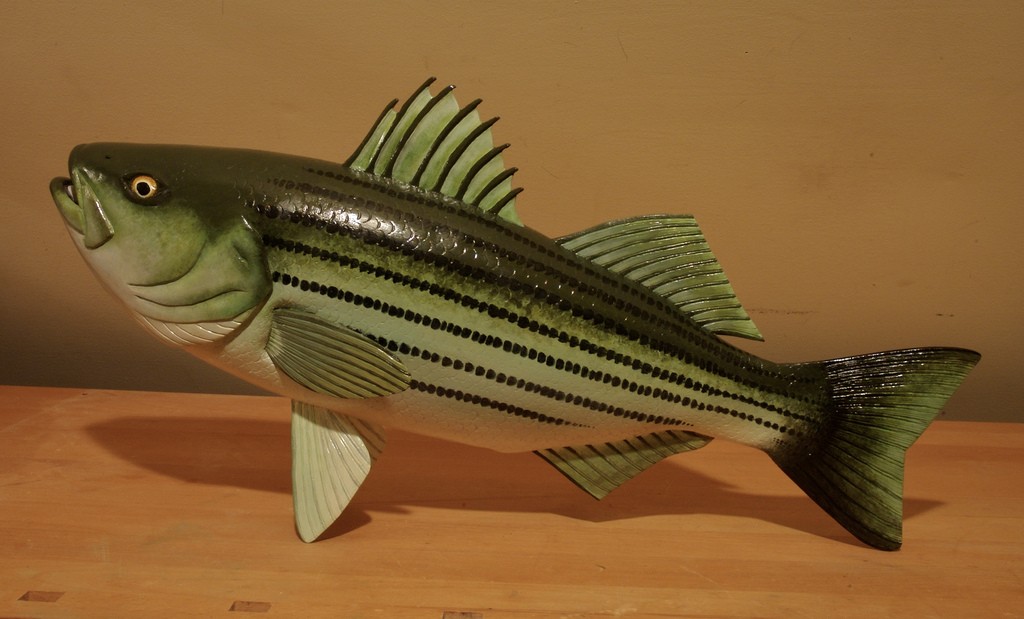Basswood: Best for wood bass

A striped bass carved, of course, from basswood. Photo: Dr.DeNo, Creative Commons, some rights reserved
When I got my first pocket knife at age eight, I wasted no time in launching my career as a famous sculptor. How hard could it be, I thought, and gathered a pile of two-by-four lumber scrap ends to carve. Thinking I should warm up before producing a Remington-inspired bucking bronco, I set about to make a fish.
Fresh from a rigorous Sharp Object Safety Class (“Always cut away from yourself. OK, have fun.”), I was careful with the blade. However, that lumber was tough and knotty, and after a while my hand started bleeding. Thus I learned about blisters. As they healed, I lowered my sights from carving to whittling sticks to mere shavings for no good reason, a task to which I remain well-suited.
It is no surprise I tried to carve a fish. I was familiar with perch and bullhead and bass. If only I’d been familiar with basswood, and the idea that there’s a difference between softwood, which is wood produced by conifers, and soft wood. Dimensional lumber like two-by-fours comes from softwood, which is soft enough to drive a nail through without splitting, but may not readily yield to a blade.
Soft wood, on the other hand, often comes from deciduous “hardwood” species, and is too soft for use as structural lumber. Poplars and willows are soft-wooded, but for carving, basswood is tops. Not only is the wood soft, it is also consistent across grain and resists checking, or cracking.
Basswood, also known as American linden, Tilia (its genus) or lime (go figure, right?), is a fast-growing native tree that prefers deep rich soils where it attains heights of 80-100 feet. Presumably named for the striped pattern of its bark, basswood’s broad heart-shaped leaves have double-serrated margins, and its small round seeds are and dry and grayish. Basswood flowers are exceptionally fragrant and are sought by honey bees, and harvested both casually and commercially for herbal teas and sleep-aid supplements. Look on the ingredients list for Tilia or lime blossom.
While it is an obscure claim to fame, basswood is one of the best materials for making fire by friction. This is not as mysterious or difficult as it sounds — with a little practice you can start a fire in a minute or two with a bow drill and a dry basswood spindle and fire board.
Equally obscure, but just as fun and probably more useful is the fact that basswood’s inner bark is the strongest plant-based fiber in our region. The bark, which peels readily in spring and early summer, is soaked 3-5 days until the inner bark separates into thin flexible strips. These can be braided and/ or reverse-wrapped into rope and string. It’s something you can do while chatting or watching a movie, much like knitting. I’ve made basswood ropes more than a hundred feet long and it never felt like work.
I haven’t taken a stab — so to speak — at carving in quite a while. I marvel at the exquisite detail in some basswood carvings, such as the song birds wrought by “The bird lady of Pierrepont,” Hazel Tyrell, in whose house I now live. If only some of her sculpting ability, or at least inspiration, rubbed off on me.
Paul Hetzler is a horticulture and natural resources educator with Cornell Cooperative Extension of St. Lawrence County.






.png)
